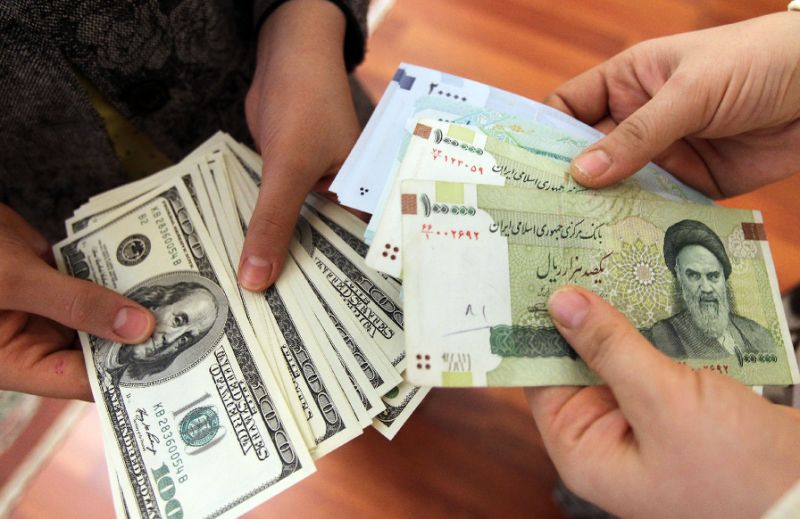
by Staff writer, SF
While Iranian currency has been steadily losing its value against the dollar since the 1979 Islamic revolution, the government in Tehran is attempting to contain a currency crisis. The Iranian rial has hit an all-time low, and American dollars are sought after during this time of political uncertainty.
The exchange rate for one dollar is up to 60,000 rials in central Tehran this week, as uncertainty over the country’s economic performance and its future political stability had people rushing to get the more stable US dollar.
Initially, President Hassan Rouhani was able to control the currency fluctuations that he inherited from his predecessor. When he was first elected in 2013, one dollar bought 36,000 rials, and in April of last year, it had risen to 40,000 rials. But Monday saw an increase to 60,000 rials.
Claiming that the government would impose a unified rate of 42,000 rials for a dollar, Vice-president Eshaq Jahangiri attempted to tamp down economic panic. However, on Tuesday there were no signs of successful implementation of that the policy. Many currency exchanges in Tehran closed down to avoid long queues, and others did not sell.
The governor general of the central bank was summoned to speak before the Iranian parliament on Tuesday, and the amount of foreign currency that people were allowed to keep in cash was limited to €10,000 (£8,700) or equivalent.
Just three months ago protests over economic grievances spread across Iran, taking politicians by surprise.
US President Trump has enforced a May 12th deadline to either sign a presidential waiver on sanctions on Iran, or withdraw the US from the 2015 nuclear accord. If the US abandons the nuclear deal, it will result in severe consequences for Iran. The sanctions lifted as part of the agreement may be restored.
Some officials blame Iran’s regional rivals, including Saudi Arabia and the UAE, accusing them of limiting Tehran’s access to dollars, but prominent Tehran-based economist Saeed Laylaz said that both internal and external politics caused the currency devaluation. “In the past 20 years, we have consistently been having hard currency surplus, even under Mahmoud Ahmadinejad … so you have to look for domestic and international political reasons to understand this,” Laylaz said. “We’re not facing a currency crisis, we’re facing a crisis in accessing currency notes, and there’s a big difference. If you want to access currency in the form of LCs [letters of credit], no matter [whether] you’re in the private or public sector, you can get it.”
Notes for sale in banks and exchange markets comprise only 5% of foreign currency in Iran according to estimates. Laylaz said that the rest is accessible through credits for business. Iran had a $17 billion currency surplus last year, when its non-oil exports reached $47 billion and it sold $55 billion worth of oil.
Vienna-based Iranian economist, Bijan Khajehpour, agreed with Laylaz, saying that political and non-economic factors had contributed to the current situation. “Political [reasons] could be a fear of harsh sanctions or external pressure because of Trump’s attitude towards Iran,” he said. “There could also be reasons because of internal factional fighting and competition for power and pressure on Rouhani.” Khajehpour added that the current situation was not caused by the country’s economic performance, but that it may have an impact on it. “We’re in a period of transition both in terms of relationship between the government and the deep state but also space that it has provided for corrupt practices. We’re in a very delicate phase in political relationships depending on what the outcome is – Rouhani can either be weakened or strengthened,” he said. “If this so-called unification of exchange rate is implemented successfully, if they manage to unify the exchange rate and pull through and provide enough liquidity to the market, then to keep this rate or around this rate, it will be a real achievement.”







